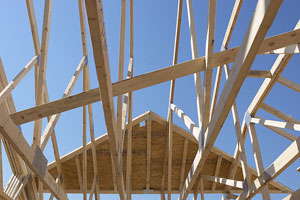
Shedding jobs that once reliably attracted new residents,
California grew at a slower pace this year than all but two other
years since 1900, according to state Department of Finance figures
released Thursday.
By Phillip Reese, McClatchy News Service
Shedding jobs that once reliably attracted new residents, California grew at a slower pace this year than all but two other years since 1900, according to state Department of Finance figures released Thursday.
The number of new births dropped. The number of new immigrants dropped. And more residents left California for other states than came here.
The end result: Statewide growth from July 2008 to July 2009 was 350,000 people, or less than 1 percent. During the rest of the decade, California averaged 525,000 new residents each year.
The calculus is simple. “What attracts people here is jobs,” said Dennis Meyers, principal economist for the Department of Finance. “When the jobs slow down, the population growth slows to a trickle.”
California saw a net loss of 800,000 jobs from July 2008 to July 2009, according to the California Department of Labor. During the rest of the decade, it netted an average of 115,000 additional jobs each year.
Elk Grove resident L.J. Smith is ditching California after 40 years here. He had major back surgery about a year ago, went on medical disability, and was laid off by a local insurance company before he was able to come back to work.
He spent several months looking for a new job, and finally found one – in Texas.
So Smith and his wife told their two teenage children they would be moving. He’s now posting online classifieds trying to sell stuff before his family leaves in mid-January.
“I’ve got a lot of mixed feelings,” said Smith, who has relatives in Houston and will work a desk job for an oil company. “I love California. But we can’t do it here.”
When people like Smith take the income they once spent here and move on – or don’t bring that income here in the first place – it hurts the region’s economy.
“Retail, banking, general services – they are probably going to suffer,” said Meyers, the economist.
Slow growth also could dampen the real estate market, Meyers and others said, because more people often means more home sales and more construction work.
But Michael Lyon, CEO of Lyon Real Estate, said he’s more concerned about job growth than population growth. “You have to have a job to buy a home,” he said.
The local real estate market is recovering because home prices have fallen to such a low level that investors and buyers are coming off the sidelines, Lyon added.
Slower growth does have its benefits. There’s less congestion, less competition for jobs and less rushed government planning.
“It gives the organizations in our state a little bit of a breather,” said Jeffrey Michael, director of the Business Forecasting Center at the University of the Pacific Eberhardt School of Business.
Communities that have long advocated for slower growth are among those not disturbed by the newest figures.
Harrison Clark is a leader of a group called Residents Defending Granite Bay that has opposed efforts to quicken growth in the upscale Placer County community. To maintain its character, he said, Granite Bay needs to stick with development plans drawn long before the real estate boom.
“The community is growing and it will have 29,000 people one day,” said Clark, adding that he is fine with that. “We just don’t want it to hit 40,000.”
Placer County posted the region’s highest growth this year, adding about 1.8 percent to its population between July 2008 and July 2009. Yolo County grew 1.1 percent, Sacramento County grew 0.9 percent and El Dorado County grew just 0.7 percent.
Looking ahead, next year’s growth could be even slower, said Michael, the economist, because many would-be parents likely decided that 2009 wasn’t the time to start a family.
After that, Michael said, slow growth in the Central Valley “will begin to subside as the economy slowly recovers and population growth will pick up above 1 percent.” However even that uptick, he said, “will still be well below the growth of past decades.”









